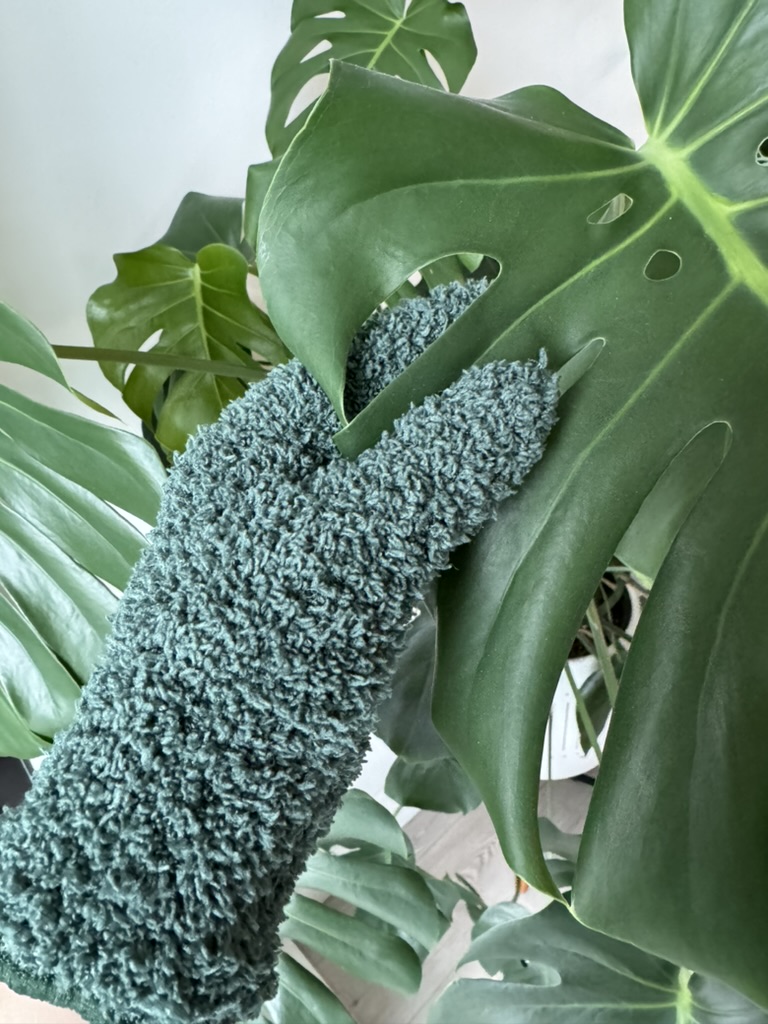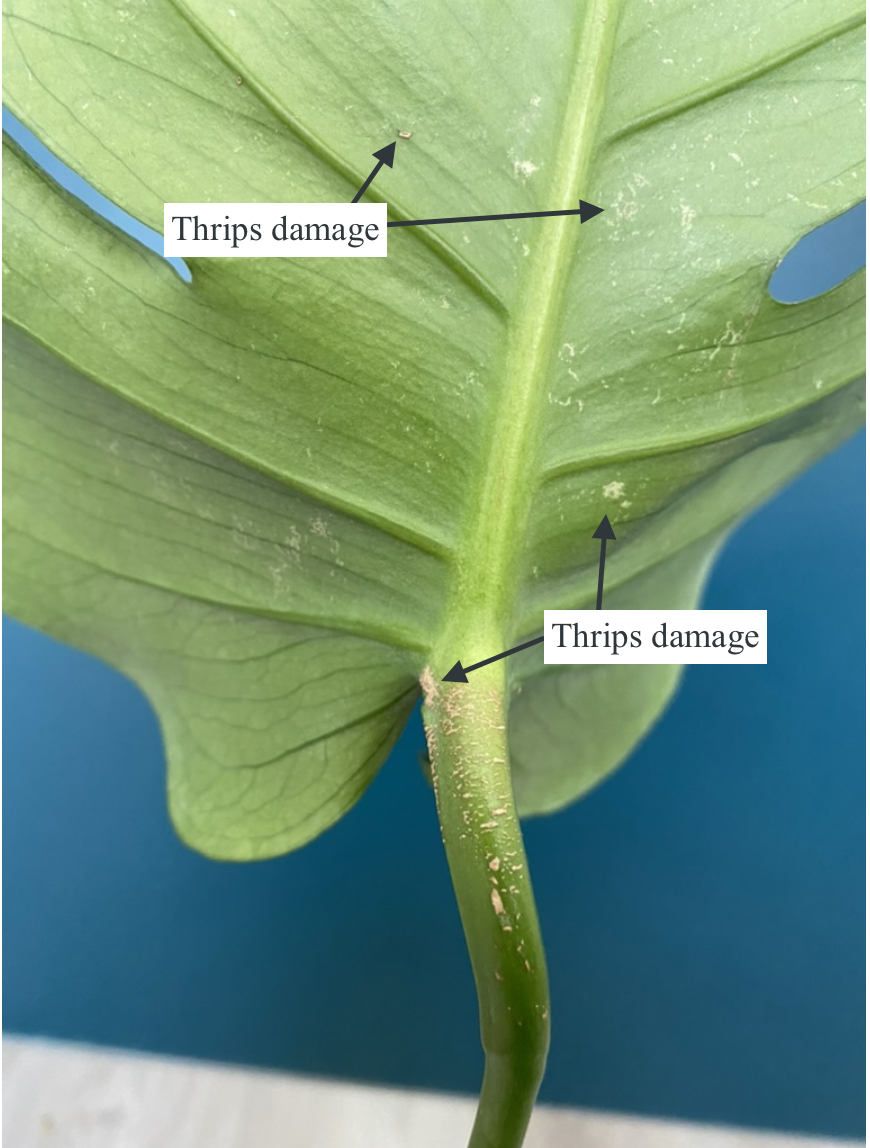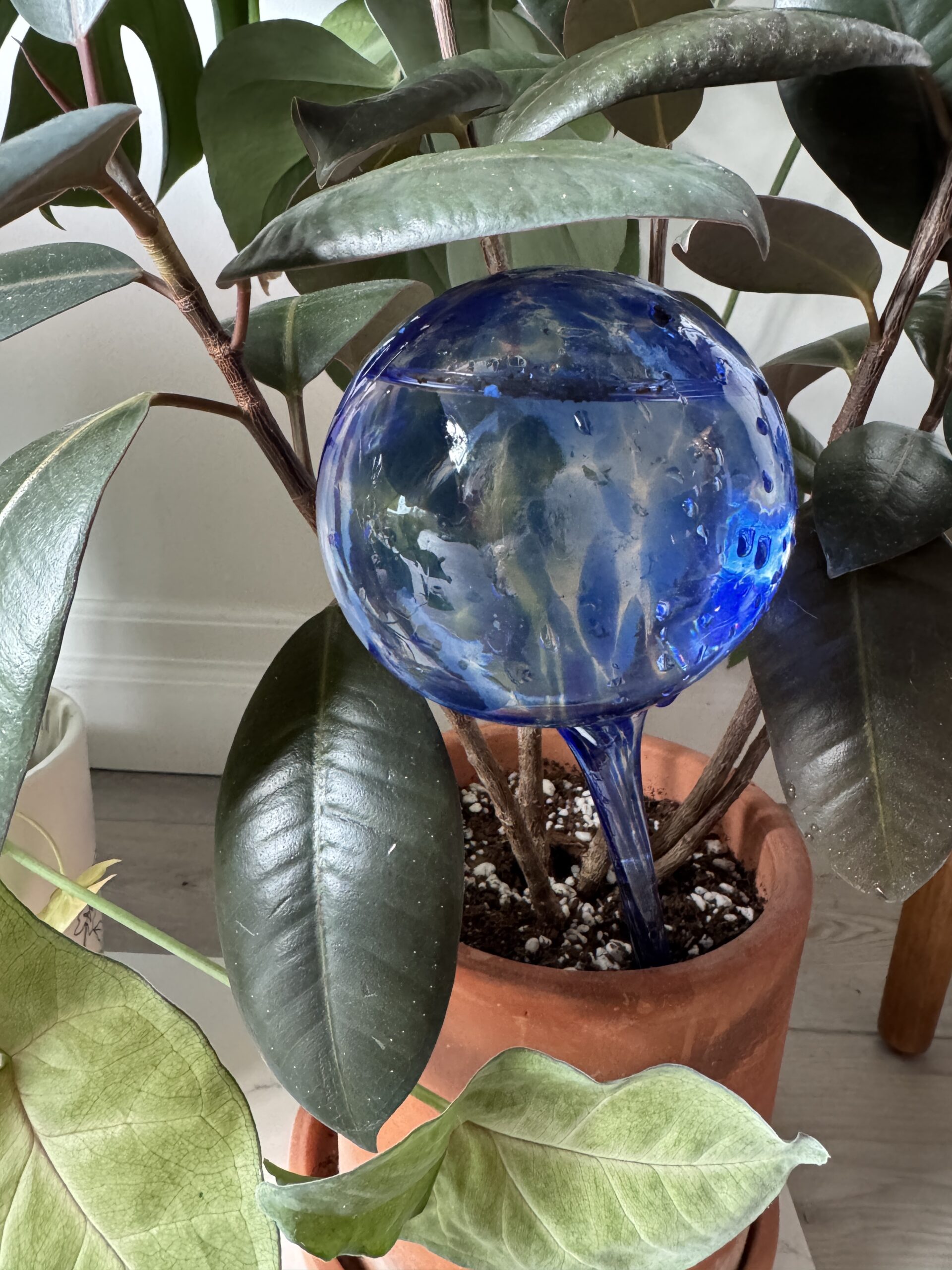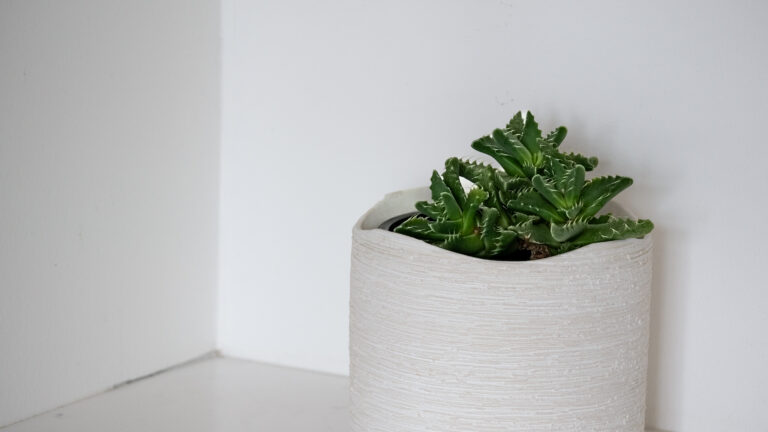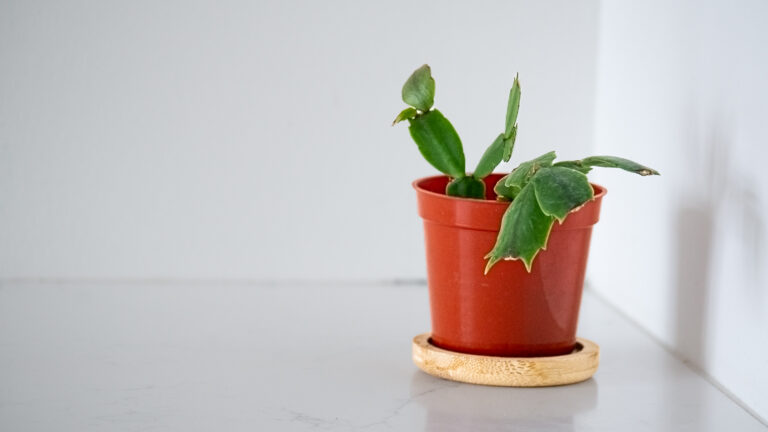Moth Orchid or Phalaenopsis is a member of the Orchidaceae family. It is native to Southeast Asia, Taiwan, China, Australia, and New Guinea.
Phalaenopsis is referred to as the Moth Orchid because its blooms resemble a moth. The Phalaenopsis genus was initially described by Carl Ludwig Blume in 1825.
There are around 28,000 accepted species of the Orchidaceae family.
Moth Orchid (Phalaenopsis) Appearance & Growth Habit
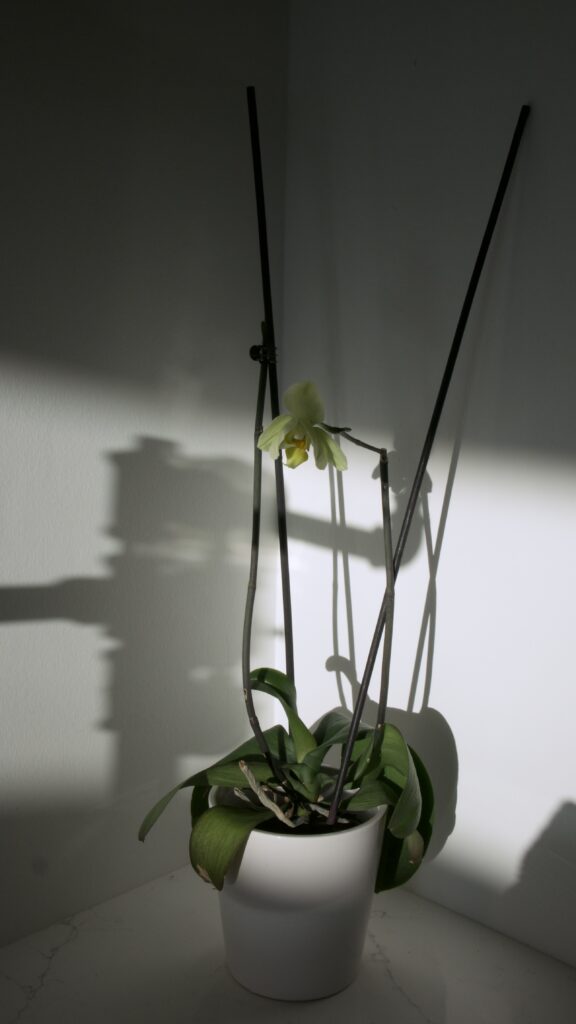
As a houseplant, the moth orchid is typically grown in a planter with either orchid bark or moss. In orchid bark, the roots are typically somewhat exposed, and you can see the crown of the plant.
Above the crown are green leaves growing from the centre. From the centre of the leaves, the Moth Orchid will grow a stem with nodes where flowers will grow out of. Many people attach the stem to a stake so the orchid will grow up right, or a bendable stake where they can decide how they want the stem to grow.
Light Requirements for Moth Orchids
Orchids thrive in Bright, indirect light. They prefer indirect light in the summer and bright light in the winter.
I keep my moth orchid in an east facing window.
Ideal Temperature & Humidity for Moth Orchids
Moth Orchids prefers a temperature between 19-30 degrees celsius. They also prefer higher humidity (60-80%), but they will be fine in average household humidity levels of (40-60%).
I use the Levoit Hybrid Ultrasonic Humidifier (LV600HH) to determine the humidity levels in my home. I use my humidifier to ensure the humidity levels in my apartment stays between 40% and 60%. Since I live in Canada and the winters can be very dry, and the humidity can drop below 30% humidity, so its helpful to set the humidity at about 45% or 50% in this season to keep all of my plants happy.
Growth Rate and Size of Moth Orchids
On average, Moth Orchids can grow up to 19 inches.
New leaves grow out of the crown of the plant, with a stem coming out of the middle. The flowers bloom off of the stem.
During growing season, don’t forget to fertilize your orchid. I use orchid plant food spikes. These are good for up to two months, and then you need to replace with new spikes.
How and When to Repot Orchids
Repotting Moth Orchids should be done every 1 to 2 years (ideally after the plant has finished blooming and new root growth is visible).
Choose a pot with good drainage and use a specialized orchid bark mix to provide excellent aeration for the roots. Orchids are epiphytic plants which means they typically grow on things like trees, and do not grow well in regular soil.
Gently remove the orchid from its current pot, trim any dead or rotting roots, and place it in fresh orchid bark. Make sure the roots are spread out and the crown remains above the substrate.
After repotting, water sparingly for the first week to allow the roots to settle, and avoid crown rot. Repotting not only refreshes the growing medium but also helps prevent root rot and promotes healthy growth.
Before you start your repot, check-out my guide on everything you need for successfully repotting plants.
Blooming Habits of Moth Orchids
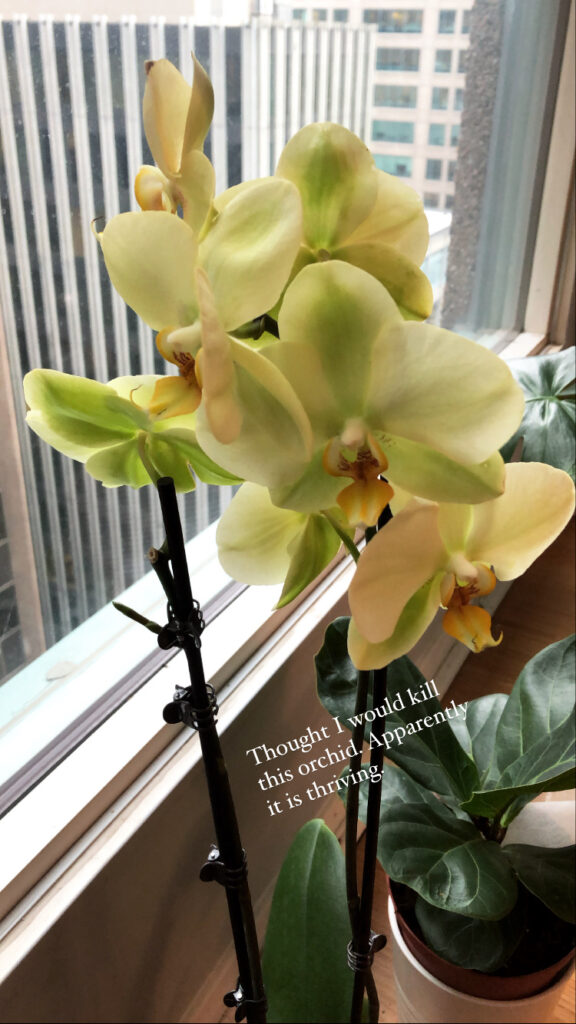
The moth orchid is known for its flowers. It comes in many colours including yellow, pink, purple, white and mottled.
Indoors, the moth orchid can bloom twice a year with its blooms lasting 2-3 months.
If your moth orchid is struggling to bloom, see common problems below for more information.
Propagating Moth Orchids: Keikis & More
The easiest way to start a new Orchid as a home grower is by replanting its keiki (baby).
Orchid Keikis can appear on old stems of the orchid. I didn’t cut my orchid stem back very far and a keiki was born. If you want to propagate your orchid, don’t cut the stem back like you typically would to encourage new blooms.
Keep the keiki on the mother plant for 1 year. Make sure your keiki is at least three inches long and has a couple healthy roots of its own. If this is the case, remove the Keiki from the mother plant (ensuring its roots and leaves are intact), and pot the orchid in orchid bark. Do not pot in soil. Moth orchids are epiphytes (they typically grow on trees in the wild) and do not do well in soil.
Patience is key with propagation. Give your new plant time to settle into its environment. Once you see new growth, you know your plant is well established.
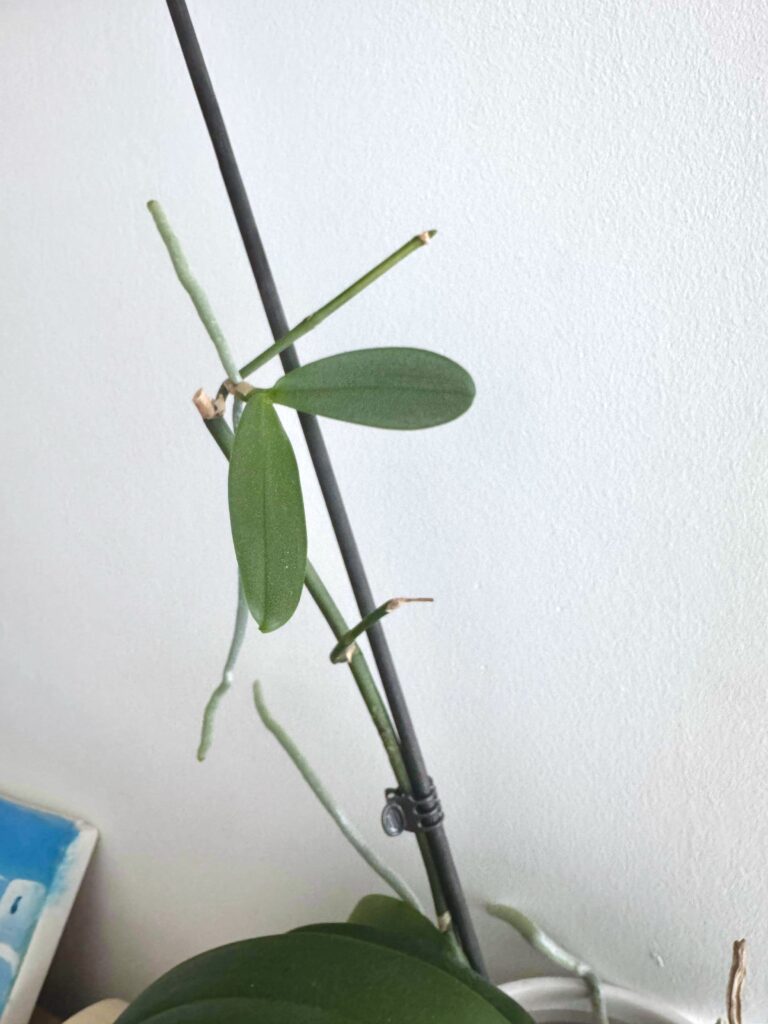
Watering Moth Orchids: How and When
There seem to be a lot of myths on how to water orchids. People either have the tendency to overwater the orchid and cause root rot, or believe they should just give it ice cubes.
However, you can tell when your orchid needs to be watered by looking at its roots. If the roots are silvery white, they are ready to be watered. This occurs typically once a week.
As you water the orchid, you can see the roots change colour as they absorb the water. Its pretty cool. You will want to water your orchid with room temperature water until the roots seem to have absorbed all the water. You can do this a few times over a 10 minute period. After ten minutes, make sure you drain an excess water otherwise the orchid can get root rot.
Try to avoid watering into the crown of the plant as well. Water will just sit there and then you will end up with crown rot and your orchid will probably die.
If you are worried about watering your orchid while you are on vacation, check-out my guide on 3 ways to water your plants while on vacation.
Common Pests and Problems in Moth Orchids
Orchids can face the following pests and problems, however they are not typically afflicted with pests.
Orchid Pests
Mealy Bugs: these look like little white cotton balls on the plant. You can remove these with your fingers if you catch them early enough, but I would use a cotton swab with a drop of Isopropyl alcohol and try to scrape them off the stem.
Common Problems for Orchids
- Overwatering: Root rot or crown rot happens from overwatering your orchid. This can happen from insufficient drainage, and/or watering into the leaves instead of around them. You can improve the drainage of your plant by ensuring your orchid is potted in a planter with a drainage hole.
- Underwatering: Even though plants prefer to be underwatered over overwatered, you still have to remember to water your orchid on a consistent schedule. If too dry, the roots can become shrivelled and die.
- Not Flowering: After your orchid has finished flowering, cut the stem back just above the second node. A new flowering shoot will form.
Moth Orchid Toxicity
Phalaenopsis are typically not toxic to touch or consume, making them a safe choice even if you have curious kids or pets.
All parts of the moth orchid are safe if accidentally ingested. It’s still wise to discourage people or pets from eating it, but it will be okay if this happens.
Moth Orchid Quick Care Guide
| Scientific Name | Phalaenopsis |
| Nickname | Orchid, Moth Orchids |
| Origins | Southeast Asia, Taiwan, China, Australia, and New Guinea |
| Light | Bright, indirect light (direct light in winter and indirect in summer) |
| Temperature | 19-30 degrees celsius |
| Humidity | High (60-80%) |
| Height | Up to 19 inches |
| Blooms | Yes |
| Propagate | Stem cutting of a small plantlet (a baby orchid growing off the flower stem) |
| Water Frequency | About once a week. Try to avoid splashing the leaves or watering into the crown. Dump out any excess water from the pot. |
| Pests | Not common, but can deal with common household pests (Mealy Bugs, fungus gnats, thrips, aphids, whiteflies, spider mites) |
| Common Problems | Overwatering (root rot, crown rot), underwatering (shrivelled, dead roots) fluctuating temperatures, not flowering, deadheading |
| Toxicity | Non-toxic |
References
Below is a list of external sources I consulted while writing this post. This post is a mixture of my own experiences, and the external sources listed below:
Royal Horticulture Society – How to Take Care of Moth Orchids
Wikipedia – Orchid
Wikipedia – Phalaenopsis
The Spruce – Phalaenopsis Orchids
The Spruce – Orchid Toxicity

